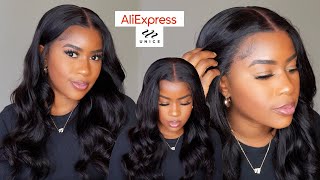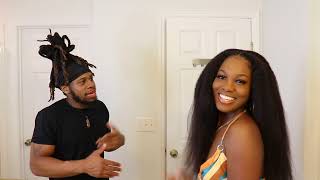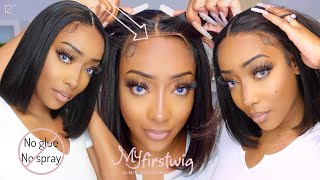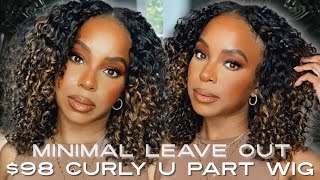If You Want Your Edges Back Stop Doing These 4 Things
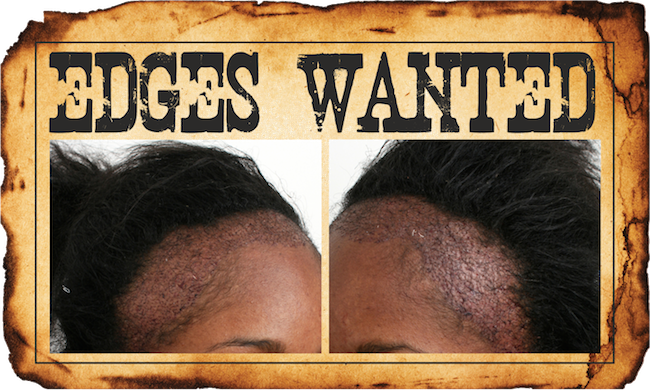
My daughter Jasmine is almost 6 years old and at that inquisitive stage where she wants to know why things are the way they are. She asks a question and whatever mine or my husband’s response she always has 8 more follow on questions. She is a bonafide information sponge at the moment.
Yesterday when I told her that I wanted to wash her hair during bath time she demanded to know if I was going to use the shower or bathtub water to wash her hair. I told her that I would use the shower as I always did. ‘Oh good’ she exclaimed. ‘I like the way the shower tickles my edges!’.
I had a giggle wondering how she even knew about edges and told her that she needs to say ‘hairline’ instead. It got me thinking about how important our hairlines are to us black women.
I would be willing to bet that most women with less than stellar edges would probably swap longer hair for a full youthful hairline. And yet with the number of school age kids that I still see out and about with the beginnings of traction alopecia, this subject and message is still very important to share.
We already know how tricky hair regrowth can be because if the follicles are severely damaged, no amount of balms, supplements* or prayers will bring the hair back.
When I look at my own hair history, even during my neck length, thin and desperately breaking relaxer years, I never had an issue with my edges. After coming across all the stories and images online of those suffering from traction alopecia, I thought that perhaps I was just lucky that it had not happened to me.
But the more I have researched, the more I have to come to realise that luck had nothing to do with it. I was simply doing things differently in my haircare that those who suffered damage were not doing.
No that’s not a dig at those who have struggled with hair loss. Alopecia can appear for a number of reasons not necessarily related to how you care for your hair. In fact my mother actually suffers from missing edges too.
Rather I hope that you see this as a learning opportunity to right whatever you have been doing in your regimen to reverse any budding hair loss issues you may be facing.
With that in mind, here are the 4 things you need to stop in order to get your edges back:
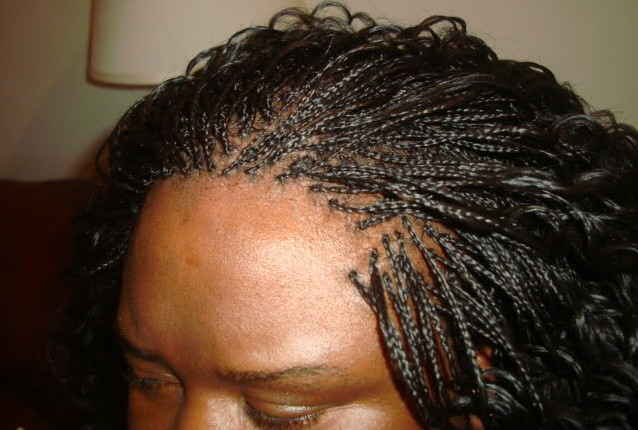
1. Ditch tight braiding or in fact any braiding at all
The first time that I ever got a weave* I went to a salon and paid what at the time felt like a fortune, to have my hair done. The stylist proceeded to braid my hair and OMG I never felt such torture in my life! I kept asking her not to braid so tight to which she would grunt her response and carry on as before.
She insisted that the braids had to be tight in order for the weave to last. Three excruciatingly long weeks later I was back in the shop to have that horrible situation taken off my head. Afterwards my entire nape was smooth as newborn skin – gone baby gone!
That was over 10 years ago, my hair eventually grew back but it was the last time I went to a hairdresser. Still traumatized here. Since then I always, always, ALWAYS braid my own hair, even micro braids. I also learned to install my own weaves* too. Of course you don’t have to braid your own, you can always get a friend or stylist that you trust to braid your hair.
If you find that you have trouble sleeping or suffer from headaches in the first week after a weave* or braids are installed then they are simply too tight. If your stylist cannot/will not braid with a light hand then they are not the stylist for you. Move on. And if your own hands are the culprit then you need not to braid your hair, get someone else to do it for you.
When it comes to growing your edges back, I’m going to do you the favor of being blunt. If your are currently suffering from traction alopecia then you have no business braiding your hair. Period. Until you have regrown those edges back to full density, braids, cornrows, twists or any other style that could further aggravate your hairline should be avoided.
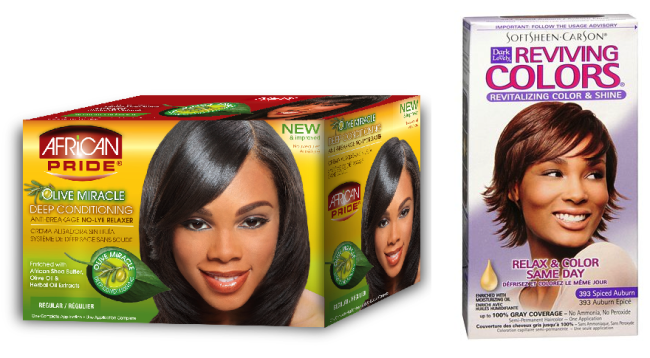
2. Get rid of relaxers and color
It’s no secret that relaxers and hair color are harsh on your scalp and in spite of the box instructions that ask us to avoid getting the product on our scalps, anyone who’s ever used them knows that it’s near enough impossible to do so.
Knowing as we do that relaxers can cause scalp burns that have caused permanent hair loss in some ladies, and knowing that some of us have more sensitive skin than others, it stands to reason that the avoidance of these chemicals for the duration of your regrowth is the obvious way forward.
You may be forced to see that your scalp is actually more sensitive than you thought it was. Many women have seen complete regrowth of their edges simply by going natural.
Now you will find that those who have never had an issue with relaxer burn, in fact a lot of the ladies currently rocking waist length relaxed strands are very stringent with timekeeping when it comes to how long the relaxer is allowed to remain in their hair.
They use timers or stopwatches to allow them to accurately track relaxer processing time. This is something that you can look into once your edges are restored but not a moment before.
Whether you decide to go natural or not is up to you but during hair regrowth, keep the chemicals away from your scalp where your hair is thinning.
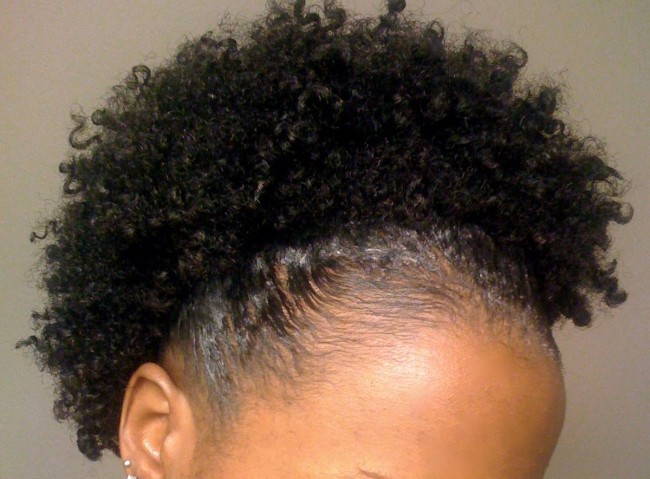
3. Just say no to tight ponytails and puffs
So you have decided to leave the braided styles behind but did you know that tight ponytails will snatch your edges off just as easily as braids? Oh yes, you see it’s all about the tension being applied so it doesn’t matter if it is coming from braids, twists, bantu knots or even ponytails and puffs.
If you currently have issues with your edges you just have to look at your regular go-to hairstyles to see where the hair loss is coming from. If you apply layer after layer of gel and edge control to your hairline daily and smooth it down with a brush then it’s no surprise that you are facing hair loss.
If you are a hair-off-your-face kind of girl, there are plenty of updo hairstyles that you can try which don’t involve braiding or tight puffs or ponytails. Look at tuck and rolls and other pinned up hairstyles and ditch the edge control products and brushes until your hairline is restored.
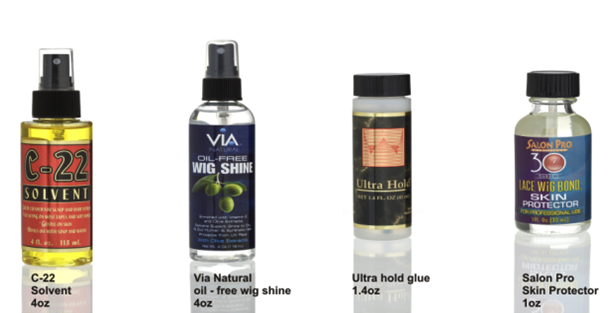
4. Kick glue and tape to the kerb
I understand that life does not stop when our edges fall out. We all have work places to go to, weddings or parties to attend and of course we want to look good right now. For this reason lace wigs* have become a popular option for many ladies.
However, in this day and age of youtube tutorials, there is really no reason why anyone needs to use glue or tape to secure lace wigs*. This is especially true if you are already suffering from hair loss on your hairline.
Securing your lace wig* with a strap will lay the lace flat against your scalp rendering glue useless. If you need a bit more security, lace wigs can also be sewn down instead of glued.
You should now know that products used to regrow edges are less important than avoid losing your edges in the first place. You should also know that if the damage to your follicles is extensive, you may not be able to restore them yourself at home and you may have to look for professional solutions like hair transplants.
Here is some further reading on traction alopecia and how to restore your edges:
Regrowing Thin Edges And Bald Spots Caused By Alopecia With Essential Oils
How I Repaired My Thinning Edges 2 Products [Video]
Three Tips To Revive Those Thinning Edges
Regrowing Edges After Seborrheic Dermatitis With Emu Oil [Video]
Lessons To Be Learned From Naomi Campbell’s Hairline

